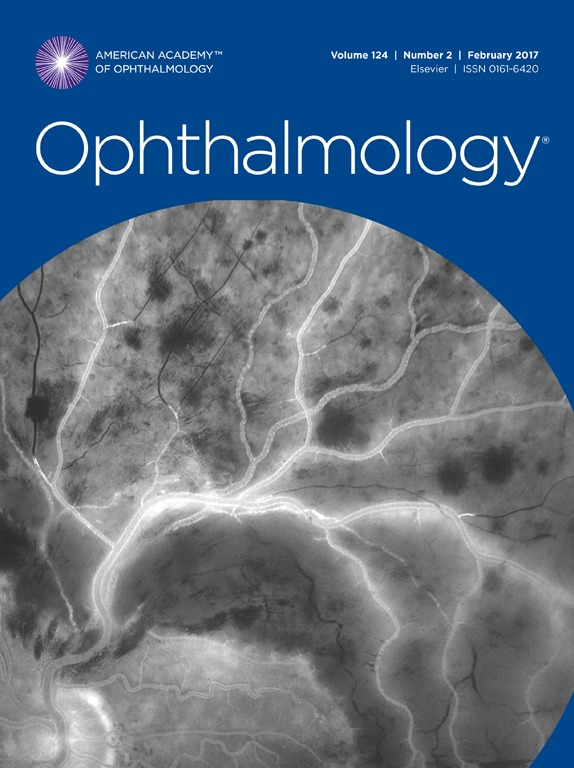关于棘阿米巴角膜炎发病率的观点:系统回顾与元分析》。
IF 9.5
1区 医学
Q1 OPHTHALMOLOGY
引用次数: 0
摘要
主题概述阿卡阿米巴角膜炎(AK)的发病率:临床相关性:尽管阿卡阿米巴角膜炎是导致人群感染性角膜炎的主要原因之一,并对视力构成威胁,但目前尚缺乏对其发病率的全面评估:方法:AK的发病率按每个医疗中心每年的AK眼数计算(年化中心发病率,或ACI)。此外,还计算了两个元分析比率:a)AK 眼数与非病毒性微生物角膜炎(MK)眼数之比;b)AK 眼数与总人口(即每个研究中作者标明的一个国家或地区的受试者总数)之比。中心是指进行研究的医疗机构(如医院、私人诊所、诊所)。实际和预测的 AK 眼年估计数是根据联合国(UN)《人口展望》中提供的 AK 占总人口的比例,乘以相应的目前和预测人口估计数(年龄范围:15 至 70 岁)计算得出的:总共纳入了 105 篇发表于 1987 年至 2022 年的文章。确定的眼球总数为 91,951 只,其中 5,660 只受 AK 影响,86,291 只受非病毒性 MK 影响。每个医疗中心的 ACI 中位数为每年新增 1.9 只 AK 眼(中位数的 95%CI 为 1.5 至 2.6),各大洲之间无显著统计学差异。AK 眼与 MK 眼总数的比率为 1.52%(95%CI:1.02% 至 2.24%),而 AK 与整个人口的比率估计为 0.0002%(95%CI:0.0001 至 0.0006),即每 100 万受试者中有 2.34 只眼(95%CI:每 100 万受试者中有 0.98 至 5.55 只眼)。与 2023 年的基线(12,954 只 AK 眼)相比,预计 AK 眼数在 2053 年和 2073 年将分别增加 18.5%(15,356 只 AK 眼)和 25.5%(16,253 只 AK 眼)。本文章由计算机程序翻译,如有差异,请以英文原文为准。
Perspectives on the Incidence of Acanthamoeba Keratitis
Topic
To provide an overview on the incidence of Acanthamoeba keratitis (AK).
Clinical Relevance
Although being a sight-threatening cause of infectious keratitis, a comprehensive assessment of the incidence of AK is lacking.
Methods
Incidence of AK was computed as the number of eyes with AK per health care center, per year (annualized center incidence [ACI]). Two meta-analytical ratios also were calculated: (1) the ratio of eyes with AK to the count of eyes with nonviral microbial keratitis (MK) and (2) the ratio of eyes with AK to the overall population (i.e., the total number of people in a nation or region, as indicated by the authors in each study). Center was defined as the health care facility where the study took place. Actual and projected estimates of the number of eyes with AK in years were calculated multiplying the ratio of eyes with AK to the total population and the corresponding population estimates, sourced from the United Nations Population Prospects.
Results
Overall, 105 articles were included, published between 1987 and 2022. The total number of eyes identified was 91 951, with 5660 eyes affected by AK and 86 291 eyes affected by nonviral MK. The median ACI was 1.9 eyes with AK per health care center per year (95% confidence interval [CI], 1.5–2.6 eyes), with no statistically significant differences among continents. The ratio of eyes with AK to the total number of eyes with MK was 1.52% (95% CI, 1.03%–2.22%), whereas the ratio of eyes with AK in relationship to the entire population was estimated at 2.34 eyes per 1 000 000 people (95% CI, 0.98–5.55 per 1 000 000 people). The projected increase in the numbers of eyes with AK indicated an increase of 18.5% (n = 15 355 eyes with AK) in 2053 and 25.5% (n = 16 253 eyes with AK) in 2073, compared with the baseline of 2023 (n = 12 953 eyes with AK).
Discussion
Acanthamoeba keratitis emerged as a relatively low-incident disorder, and no significant differences in terms of its incidence were found among different continents.
Financial Disclosure(s)
Proprietary or commercial disclosure may be found in the Footnotes and Disclosures at the end of this article.
求助全文
通过发布文献求助,成功后即可免费获取论文全文。
去求助
来源期刊

Ophthalmology
医学-眼科学
CiteScore
22.30
自引率
3.60%
发文量
412
审稿时长
18 days
期刊介绍:
The journal Ophthalmology, from the American Academy of Ophthalmology, contributes to society by publishing research in clinical and basic science related to vision.It upholds excellence through unbiased peer-review, fostering innovation, promoting discovery, and encouraging lifelong learning.
 求助内容:
求助内容: 应助结果提醒方式:
应助结果提醒方式:


